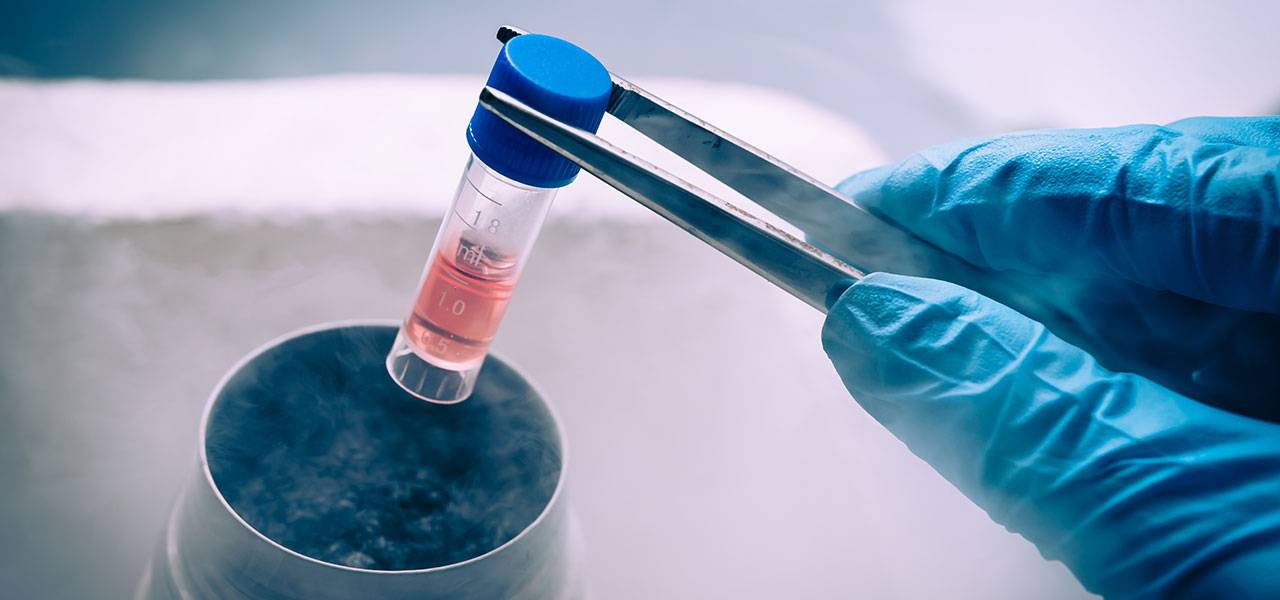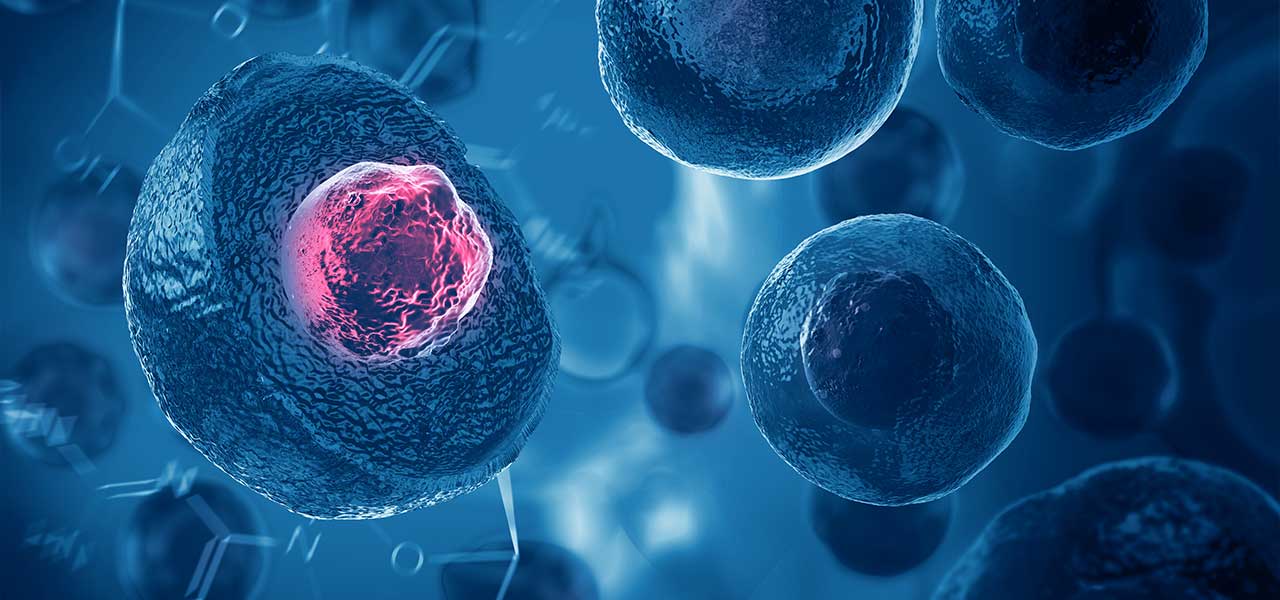Stem cell therapy used to be touted as a potential “fountain of youth” both within and outside of the scientific community. However, it is no longer seen as the be-all, end-all solution to chronic disease or anti-aging. This is in part because scientists have discovered that it’s not, in fact, stem cells themselves that generate dramatic transformation for the better — it’s something else.
Before getting into that, though, it’s important to understand the problems with stem cell therapy.

Where do stem cells come from?
The richest source of your own body’s stem cells is in your fat tissue and bone marrow. Many clinics around the U.S. assist with harvesting your own stem cells, which are then reintroduced into your body either through a shot, IV, or various other ways.
Unfortunately, using your own stem cells often means using aged cells that may not have the same regenerative qualities as younger stem cells. There is evidence that these older stem cells may not perform as well as younger stem cells.
Another source of high-quality stem cells is the placenta, cord, or amniotic fluid of a newly-born baby. In the past, this placenta would be considered medical waste and disposed of. However, we now know that this tissue is an incredibly rich source of mesenchymal stem cells (MSCs). These are considered “top-of-the-line” stem cells.
Many companies will sell these MSCs, to be administered to you (via IV or as a shot) by qualified health professionals. Again, we used to think this was a treatment that would revolutionize medicine.
However, we no longer feel using either your own body’s cells or MSCs for treatment is the best answer, for three specific reasons:

1. Your body will kill MSCs
MSCs from a mother’s placenta have low antigenicity. That means they won’t immediately trigger a red flag by your immune system. However, eventually they do, and that’s a problem.
Here’s how it works: Your immune system’s primary job is to identify foreign invaders and destroy them. Placental tissues are foreign tissues, but placental MSCs don’t seem to trigger a big immune system response because they lack a major cell identifier called HLA class I on their surface. (This is like going to a party with a blank name sticker on it; no one can tell whether you’re supposed to be there or not.)
But these cells do express another cell-identifier called HLA-DR (class II) — so eventually these MSCs will be identified and tagged for destruction by your immune system. (Someone at the party will out you as a gate-crasher.)
The hope is that by the time the MSCs are targeted for destruction, they’ve already healed your tissues because they’ve secreted a lot of exosomes (remember this, because we’ll come back to it).
In other words, a major issue with MSC stem cell treatment is that inevitably your body will destroy the MSCs … thereby eliminating their benefit.

2. Stem cells can provoke a violent immune reaction
If you receive an injection treatment of stem cells that have been contaminated (with, for example, white blood cells, bacteria or tissues that shouldn’t be there), it’s possible you could have a violent immune reaction.
There have been several cases of people who received stem cell treatments that developed massive, life-threatening infections after receiving contaminated stem-cell injections.

3. There are a number of shady stem cell clinics
As you are already aware, not every health clinic is created equal. Always vet your medical professionals and clinics; your life and health is on the line.
The FDA considers any stem cell therapy with stated live cells as a pharmaceutical agent for which there is currently no authorization to use, and has been cracking down on unqualified clinics promoting stem cell treatments.
Medical procedures always come with risk, but according to the FDA, “unproven stem cell therapies can be particularly unsafe.” (This is true even if you’re working with your own stem cells, since there are still safety risks — including that if cells are manipulated after being removed from you, there’s a contamination risk.).
Attendees of a 2016 FDA public workshop shared about severe patient outcomes as a result of bad stem cell treatments: One patient was blinded after a stem cell injection into the eye. Another, upon receiving a spinal cord injection, ended up with a spinal tumor.
According to the FDA, other safety concerns for “unproven treatments” include “administration site reactions; the ability of cells to move from placement sites and change into inappropriate cell types or multiply; failure of cells to work as expected; and the growth of tumors.”

What should you do instead?
As it turns out, the impressive efficacy associated with stem cell treatments was not about the stem cells themselves, but something else we’ve already touched on.
The real magic was in the exosomes the stem cells secreted.
Exosomes are tiny instructional messages cells send to one another that contain proteins, enzymes, and receptors that help with cell structure and function. When you administer a high-quality exosome treatment, you’re basically sending instructions around to your cells that say, “Wake up and rejuvenate yourself!” Your cells themselves do a lot of the heavy lifting — it’s as if they just needed the right messenger to tell them to do it.
Over the last ten years, volumes of research have accumulated on exosomes and their various effects. This mountain of data is, in my humble opinion, only the barest glimpse into the potential of exosomes to not only treat and cure disease, but promote dramatic anti-aging effects.
And among other advantages, exosome treatments are far safer than full-on stem cell treatments because exosomes are concentrated stem cell extracts with no cells. By not involving any foreign cells in the treatment, the chance of having a bad (and potentially fatal) reaction is minimal.

Exosome treatments are simple, easy to administer, and extremely effective.
They’re also inspiring, because exosome treatments point to a shift in the direction of modern science away from giving you a substance to suppress symptoms or take away your pain, and rather assisting your body to heal itself.
Is there anything more elegant than that?
World J Exp Med. 2017 Feb 20; 7(1): 1–10
PLoS One. 2017; 12(2): e0172642
Rev Bras Hematol Hemoter. 2013; 35(1): 62–67
Rev Bras Hematol Hemoter. 2013; 35(1): 62–67 11
https://www.cdc.gov/mmwr/volumes/67/wr/mm6750a5.htm
https://www.fda.gov/consumers/consumer-updates/fda-warns-about-stem-cell-therapies
